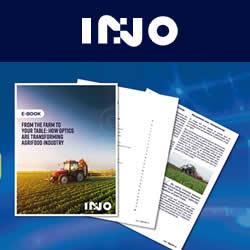The Potential Power of Autonomous Flying Drone Swarms-from Agriculture to Military Use
Researchers at South Dakota School of Mines & Technology are working to infuse cooperative behavior on a collection of flying robots. Developing the ability for drones to work together in swarms could have wide-ranging applications¬—from agriculture to military use.
If you've ever marveled at a flock of birds moving in complex patterns as if it were one single large organism, you're not alone. Researchers at South Dakota School of Mines & Technology are working to infuse similar cooperative behavior on a collection of flying robots. This is not an easy task, birds have millions of years of evolution that allow them to flock, researchers developing swarm robotics are writing mathematical models to mimic some of this behavior. Developing the ability for drones to work together in swarms could have wide-ranging applications—from agriculture to military use. But many scientific hurdles remain.
"These decision-making problems are very challenging because each independent robot in the swarm has to predict how others will behave in the future and then make its own decisions accordingly," says Shankarachary Ragi, Ph.D., an assistant professor in the Department of Electrical and Computer Engineering at SD Mines who is leading the research. Ragi and his team are helping to develop mathematical models, or algorithms, that enable these kinds of cooperative behaviors in drones.
Decades ago, computer scientists realized they could build a virtual supercomputer by making several normal- sized computers work together in a network. Today relatively powerful computing is available in small packages. Similarly, a collection of drones the size of hummingbirds programmed to work cooperatively, can multiply their individual capabilities and act like a single powerful entity. In previous years, robotic swarms were controlled by a single centralized computer. The holy grail for those working on swarm technology is to develop algorithms that enable a swarm of drones to make decisions in a decentralized manner and recover from any mistakes in real time. "Even if the swarm makes a mistake, something goes wrong, the swarm needs to learn from this mistake, by immediately reacting and then evolving," says Ragi. "Basically, we are developing robust algorithms to account for sudden, unexpected changes." It's a huge challenge; in truth, this process is not easy for living organisms—after all, birds occasionally fly into windows.
If fully developed, swarm technology has wide ranging applications. Each individual drone can use its own on-board sensors (e.g., optical/thermal cameras), to detect and identify objects of interest--so each drone in a swarm has its own version of part of the bigger picture. Researchers are also working to build software that allows a swarm of drones to piece together all images the swarm is seeing and then collectively identify and differentiate various objects of interest.
Dr. Magesh Rajan, professor and department head of electrical and computer engineering said, "Our electrical engineering faculty at SD Mines work at the cutting edge of research in their fields providing invaluable learning opportunities for students and collaborate with colleagues across disciplines and around the world to address society's biggest challenges."
Imagine a new form of organic precision agriculture where swarms of drones are programmed to recognize and remove weeds from a field while leaving the crops intact. Or, drones with special sensors detecting one part of the field that is nutrient deficient, deploying fertilizer in exactly the right place with the amount needed. Drone swarms could also be used for building or bridge inspection; detecting tiny changes or stress points in the structure enabling engineers to plan maintenance and repair well before any problems occur. These swarms also have military and public safety applications, such as taking down rogue drones. Recently, privately operated drones flown too close to a runway caused the shutdown of the United Kingdom's second largest airport. Swarm technology could someday be deployed to stop unwanted private drone activity in any area.
Furthermore, the algorithms developed to help a swarm of drones make decisions and recover from mistakes can optimize problem solving in other areas. This research could have further applications in agriculture, medicine, engineering or in any field where complex problem-solving is needed.
Featured Product

